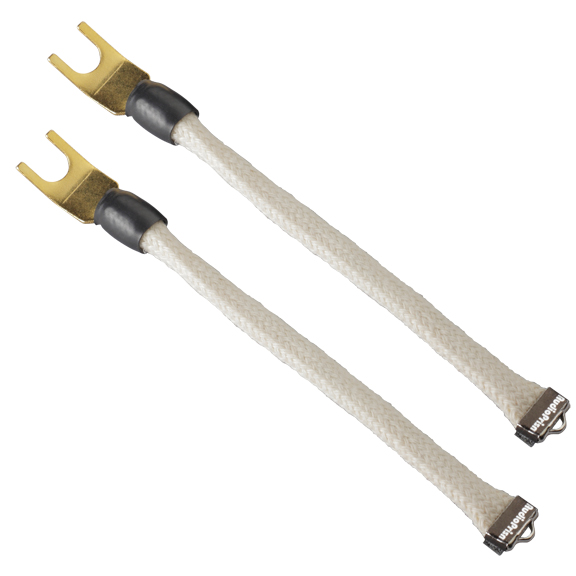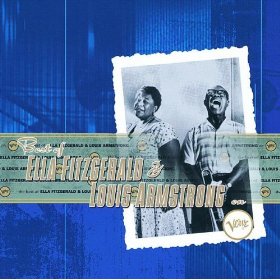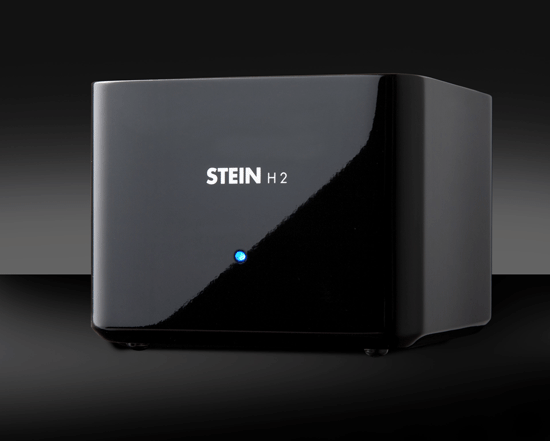Certainly the Most Bang for the Buck!
|
Tweak of the Year? Certainly the Most Bang for the Buck! Let it be known that I embrace tweaks. They’re hardly noticed as most audiophiles look at how big my loudspeakers are or what type of amplifier is gracing my listening space. Further, you wouldn’t qualify someone fickle who still owns and proudly uses two sets of Argent Room Lens (otherwise known as Helmholtz Resonators) that I originally reviewed back in the spring of ’99 would you? (review here). At least once every couple of years, I think I can live without them. Pull them out. Listen for the difference which usually takes all of 30 seconds and immediately place them right back! Coincidentally, this was also the same year I began using room correction (Tact), and in 2005, moved up to the ultra-sophisticated – and expensive – version provided by Ralf Ballmann of Behold Electronics. In essence, I can hardly remember living without room correction. And, in my case, it wasn’t an option. My room – as many others may or may not be aware – was an acoustic nightmare. Interestingly, I thought my room was sonically acceptable. Basically, I had become used to the sound. That is, until I got it measured and saw for myself its numerous frequency-related spikes, gaps and dips. When I heard these same frequencies smoothed out, I signed up for National Poster Boy for Room Correction. My point? This isn’t so much about room correction, or Helmholtz Resonators but more about seeking the truth through experimentation, opportunity and open-mindedness. It is to this end that newer products have made their way into my listening space. Some with profound results. Namely, Franck Tchang’s Acoustic Resonators, Jack Bybee’s Golden Goddess Speaker Bullets, the weird and wiggly Shakti Hallographs and the even stranger than fiction Acoustic Revive RR-77 ultra – low frequency generator. Small, unobtrusive and easy to A/B, I’ve come to further enjoy the benefits of these products with every listen. To the point that I find it sometimes hazardous to my health. Literally, there has been times when I’ve gone into my listening room and did not come out for one, maybe two days. And now this….
I got in touch with Audio Prism’s chief Byron Collett and was sent a couple of Ground Control devices priority mail (thank you). My goal was to try them out in two very different (physically and financially) setups. My downstairs setup includes the Elliott Studio Arts model 66-100 tube amplifier and Behold Gentile amplifier. In addition, I’ve been really enjoying the new April Music Stello series model Ai-500 integrated and CDA-500 CD player with the wonderful Revolver monitors using Swedish cables from Entreq throughout. My upstairs system employs the very large 800 lbs. Sunny Lo Horn loudspeakers which are tri-wire-able (hence the three sets of Ground Control devices). Electronics are two Behold BPA768 amplifiers, Behold preamp and the latest Nova Physics Memory Player. All cabling, wire and AC conditioner is Bybee Golden Goddess. The Ground Control’s sonic claims seem rather straight forward considering its nothing more than a mere piece of ground wire. The Ground Control’s theories are laid plain in this introduction located on their website: “Seventy five years ago—when valves were new, when speakers were magnetized by coils of wire, and stereo was a distant concept explored by the most advanced audio thinkers—radio amplifier circuits were paired with a solid copper plate—a ground plane. These amplifier circuits were constructed with point-to-point wiring and were carefully, symmetrically laid out with particular attention to maintaining consistent spacing from this copper sheet. This ground plane served several functions: it provided shielding from external electrical fields, it established a local reference point for “zero signal” (the dividing line between the positive and negative swing of the impulse for push-pull, or positive to zero for single-ended amplifiers) and a proximate storage for electrons representing the negative half of all signal activity, significant because these local electrons composed a mirror image of the circuit components for every electrostatic moment. These electrostatic moments occur in electrical fields when there is a vector change in that field, i.e., from positive to negative. When an audio device reproduces even the simplest musical instrument there are many of these moments — up to thousands per second — so many in fact that the electrostatic field seems continuous… It’s ironic that modern audio equipment, though vastly more capable of reproducing all of the signal elements that earlier equipment could provide, so often seems to be lacking the richness and subtlety that was so well portrayed by that earlier generation of measurably inferior equipment. Today, we strain to get a glimpse of what a master of cello provides to a live audience. We are continually presented with brass instruments that sound more like the buzzing of tissue paper wrapped over a comb. And drum heads sound as if they are coated in lard. How can this be? One explanation is that, instead of being positioned intimately inside our amplifiers, preamps, etcetera, like those copper plates of yesterday, our ground planes are now located under the street in utility conduits, or down at the local power station. The local support of the negative half of all of our audio signals is a thing of the past. Thus, half of all musical information is being compromised by unknown dielectric materials interacting with those electrostatic moments in random, uncontrolled fashion, on the ground side of our circuits.” The Ground Control’s sonic claims surrounding ground wire may read too simplistic (read: not crazy enough), but they do work. By simply installing one Ground Control on the neutral (black) terminal of my loudspeakers, the results in my system were immediately apparent. The big easy sound that horns are known for suddenly became that much more relaxed. I didn’t really notice how easy until I looked over at the Behold’s volume setting. I was playing at least 3dB louder than normal. Moreover and I think most importantly, the Ground Control quiets noise: the type you never knew you had until you insert this device. Resulting in a better defined soundstage, which includes image specificity, bass and rhythm. There’s an increase of pace, rhythm and timing (PRAT), which leads to far better overall enjoyment of the music. Downstairs with the Behold Gentile (used a preamp with the Elliott Studio Arts 66-100), and the Revolver Music Series One monitor loudspeakers, I heard pretty much the same thing. More dynamic pop; life… more get up and go. Whatever you choose to call it, it’s all there. I didn’t get a sense of an exaggerated stage via the Ground Control. No bloating nor restrictions. Just sweeter, smoother with lots more swing. Nice. I was surprised that something as simple as a wire “pigtail” would’ve been discovered a long time ago. If it was, then I missed it. I’ve owned products that were designed in a star-ground configuration but none sounded quite like this. I can state for the record that I am thoroughly enjoying the benefits of the Audio Prism Ground Control in the here and now. Highly recommended!
clement perry Second Opinion
The Ground Control Reference edition comes in an attractive gold emboldened box, retails for $250.00 and, at first blush, made me highly skeptical of CP’s impressions. The Ground Control simply does not look like it can do anything at all not to mention the high marks CP gave it (and I do trust CP’s ears emphatically). Thank God we listen with our ears and not our eyes. The installation was simple for me because CP would not allow me to bend or stoop down behind my Sunny H3-10W Speakers (still recovering from back surgery). All told, to install two sets to the negative leads of my bi-wired Sunny loudspeakers, took CP less than five-minutes.
After a couple of days the entire system seemed to sound less stressed and more full-bodied .the wall behind the Sunnies became a colorful landscape with tighter focus and specificity. Individual instrumental solos had a natural sweetness with harmonic textures attached I had not noticed previously. The Ground Control is a welcomed addition to my system and maintains the same enjoyment for me when I’m listening to HD radio where the sound has become instantly quieter and more three-dimensional. That’s saying a mouthful when concerning radio. The Ground Control gets my early vote for the Stereotimes Most Wanted Component Award, definitely a must have especially at its more than affordable cost during these tough economic times.
Next up… The Steinmusic Harmonizer
Stay tuned for my next upcoming article in the next few days. I’ll say this. I’ve not encountered any tweak minus the Bybees that have proved their worth in an audio system. Expensive (estimated at $2,500.00 US retail) but the overall results have proved to be nothing short of astonishing. Stay tuned….
|
Stereo Times Masthead
Publisher/Founder
Clement Perry
Editor
Dave Thomas
Senior Editors
Frank Alles, Mike Girardi, Russell Lichter, Terry London, Moreno Mitchell, Paul Szabady, Bill Wells, Mike Wright, and Stephen Yan,
Current Contributors
David Abramson, Tim Barrall, Dave Allison, Ron Cook, Lewis Dardick, John Hoffman, Dan Secula, Don Shaulis, Greg Simmons, Eric Teh, Greg Voth, Richard Willie, Ed Van Winkle, Rob Dockery, Richard Doran, and Daveed Turek
Site Management Clement Perry
Ad Designer: Martin Perry





 My initial large-scale impressions were that the Ground Control seemed to have appealing warmth about them producing an invitation to listen more. In addition, dynamic contrasts seemed easier to discern, allowing me to follow the attack of percussive instruments in more realistic way. On a smaller scale: rhythmic pace, melody and tempo seem to also possess more jump factor breathing new life into old jazz standards like Ella Fitzgerald’s rendition ofAutumn in New York and Art Blakey’s It’s Only a Paper Moon.
My initial large-scale impressions were that the Ground Control seemed to have appealing warmth about them producing an invitation to listen more. In addition, dynamic contrasts seemed easier to discern, allowing me to follow the attack of percussive instruments in more realistic way. On a smaller scale: rhythmic pace, melody and tempo seem to also possess more jump factor breathing new life into old jazz standards like Ella Fitzgerald’s rendition ofAutumn in New York and Art Blakey’s It’s Only a Paper Moon. 




Be the first to comment on: Certainly the Most Bang for the Buck!